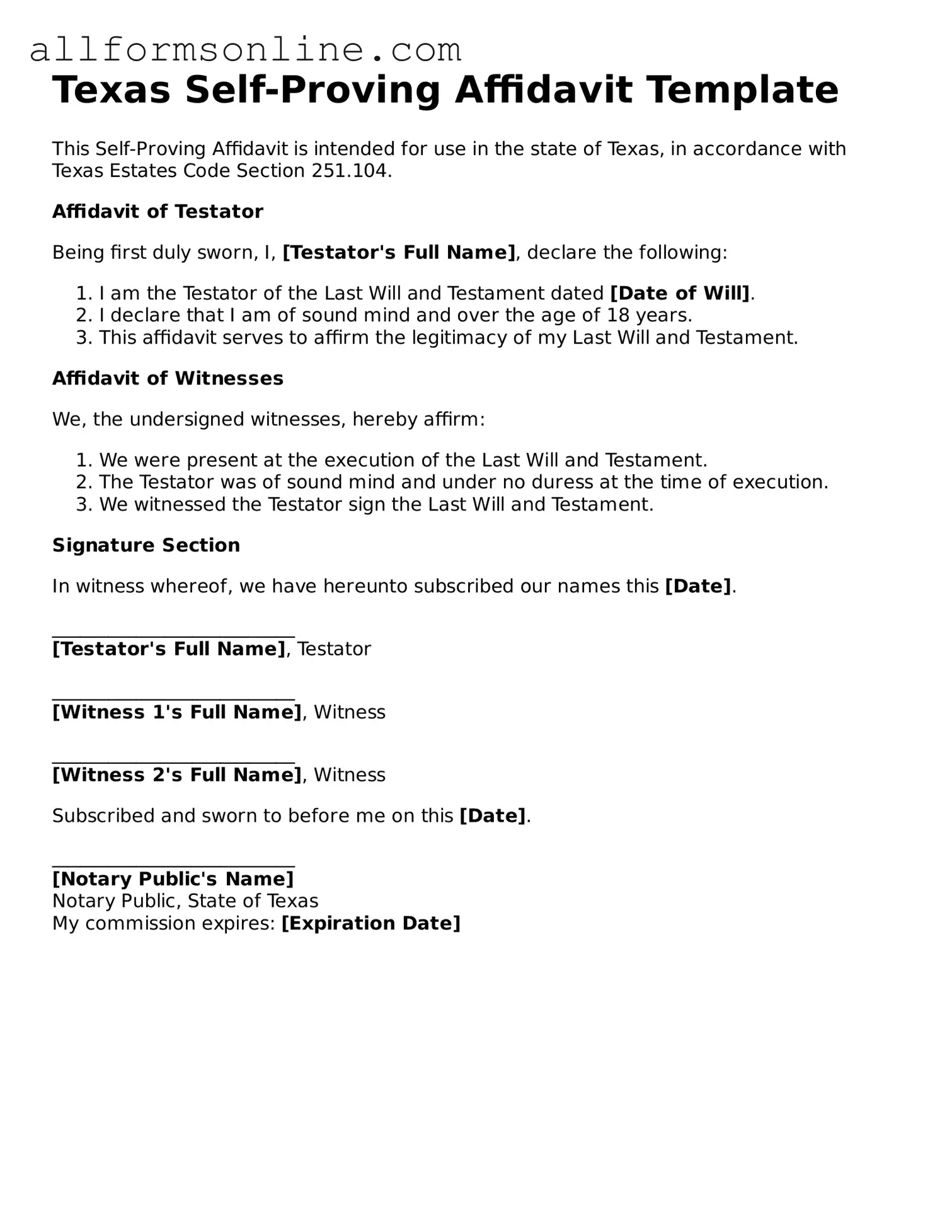What is a Texas Self-Proving Affidavit?
A Texas Self-Proving Affidavit is a legal document that accompanies a will. It allows the will to be validated without the need for witnesses to testify in court after the testator's death. By signing this affidavit, the testator and witnesses affirm that the will was executed correctly and voluntarily. This simplifies the probate process, making it easier and faster for the estate to be administered.
Who can create a Self-Proving Affidavit in Texas?
In Texas, any individual who is at least 18 years old and of sound mind can create a Self-Proving Affidavit. This typically includes the testator, who is the person making the will, and at least two witnesses. It is essential that the witnesses are not beneficiaries of the will to ensure impartiality. The affidavit must be signed in the presence of a notary public to be considered valid.
What are the benefits of using a Self-Proving Affidavit?
The primary benefit of a Self-Proving Affidavit is the ease it brings to the probate process. By eliminating the need for witnesses to appear in court, the affidavit can significantly reduce the time and complexity involved in validating a will. Additionally, it can help prevent disputes regarding the authenticity of the will, as the affidavit serves as a sworn statement of its validity.
How do I properly execute a Self-Proving Affidavit?
To properly execute a Self-Proving Affidavit in Texas, follow these steps: First, ensure that the will is signed by the testator and witnessed according to Texas law. Next, prepare the Self-Proving Affidavit, which should include the names and signatures of the testator and witnesses. All parties must sign the affidavit in the presence of a notary public. Once completed, the affidavit should be attached to the will when it is filed for probate.
Can a Self-Proving Affidavit be revoked or changed?
Yes, a Self-Proving Affidavit can be revoked or changed, but doing so requires careful attention to legal procedures. If a new will is created, it should include a new Self-Proving Affidavit that supersedes the previous one. Alternatively, if the testator wishes to revoke the affidavit without creating a new will, they must do so in writing and follow the appropriate legal guidelines. It is advisable to consult with a legal professional when making changes to ensure compliance with Texas law.
